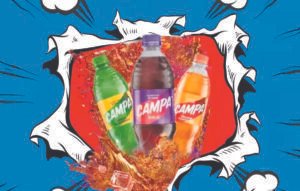
NANDINI VAIDYANATHAN offers insights into revitalising past favourites and resurrecting dead brands

Let’s start with defining what we mean by a dead brand. In the context of this article, it refers to a product which has disappeared from the market for at least a decade. It DOES NOT refer to products that are available in the market but have disappeared from the minds of their customers; in other words organisations that have lost their sheen and reinvent themselves to capture mindshare of the customers. Good examples are Apple which took a beating when Steve Jobs was thrown out of the company; Lego which lost its mojo but clawed its way back when it returned to its core product, which was the building blocks; Pepsi making drinking cola cool with its ‘youngistan’ campaign; and Old Spice which moved away from its suave, mature, man-of-the-world image to hip and happening youngsters with its ‘smell like a man’ tagline.
No, we are not talking about such revivals in this article. Two brands that I earnestly wish revived themselves to become customer favorites are Sumeet Mixers and Anjali kitchenware. Both were way ahead of their time. Both innovated fast and furious. Both gave the customer what she did not even know she wanted! Today I see them both on Amazon but I’m sure they are nowhere on the radar of generations after mine.
We are talking about brands like Campa Cola that died over 30 years ago and was bought by Reliance Consumer Products Ltd (RCPL) in 2022. Experts say that Campa Cola, which was owned by Pure Drinks, died because it couldn’t withstand competition from international players like Coke and Pepsi who had more marketing muscle. Let’s go with this simplistic explanation although I am quite certain there is more to this story of failure than just strategic armory.
The aim of this article is not to predict whether RCPL will succeed in exhuming the dead brand and breathing new life into it. That, time will only tell. But if there is anyone who has the wherewithal to do it, it is the Reliance Group. They not only have a no-bottom war-chest but have a good mix of experience (older generation) and young, educated and market-savvy inheritors to give Campa Cola every possible chance at succeeding.
The starting point of this journey is to understand why Campa Cola should be revived at all. Is it only driven by nostalgia (fond memories of events and activities in yesteryears with Campa Cola being an integral part of them), or patriotism (home-grown brand)? Or is there market backed data that clearly indicates that there is a sweet spot that it can find itself in, once revived? If we have a compellingly convincing reason why Campa Cola should be and therefore can be revived, then it is important to do two things. One is to go back in time and understand what made Campa Cola a successful brand. By this I mean understand product attributes, customer connect, industry landscape and economic conditions during that time − all of which propelled the brand to the top of the shelf. It should be a deep dive with no layers unraveled, nothing ignored, however small or insignificant.
Then, study the market as it is today. E.g., increasingly there is a growing trend among health-conscious youngsters to move away from carbonated drinks. RCPL plans to launch the old basic cola, and two new variants, lemon and orange, but cola-based nevertheless. Given that it is contrarian to the buying behaviour, what can RCPL say and do to make it palatable?
If RCPL gets this right, the other things are likely to fall in place fairly easily. Consumption sizes and frequency, price and distribution are housekeeping details. RCPL in any case has access to the Group’s largest distribution network. Their pockets are so deep that they can have low market penetration price and absorb the losses for several years without gasping. And as a Group, their footprint in various markets is so embedded that they can strategise leveraging their partnerships to mitigate any losses.
Brands that I would love to see returning from the dead are Segway (loved traveling on one in Nice, with the wind in my hair, speeding down the promenade like a reckless teenager), Nokia (simply loved their entry and growth story in India and grieved at their myopia in not moving to smart phones), Kodak (every time I drive past Kodak factory in Ooty, I feel a familiar jolt of pain in my heart) and Blackberry (I have very fond memories of being walked around their factory in Calgary many moons ago. Everyone at the plant was so flush with excitement, promise and fervor that when they shut down I wept as much as the employees did).
And the one brand I hope no one in his right mind will ever think of reviving is Abercrombie and Fitch, the stupidly snobbish, ridiculously classist brand. Do you know their managers would unabashedly proclaim that their brand is only meant for beautiful-looking people and therefore they hire good-looking people to attract good-looking customers! And one of their managers had the gall to say, “We would rather burn our clothes than give to poor people!” I wonder in which hell he’s burning now!





